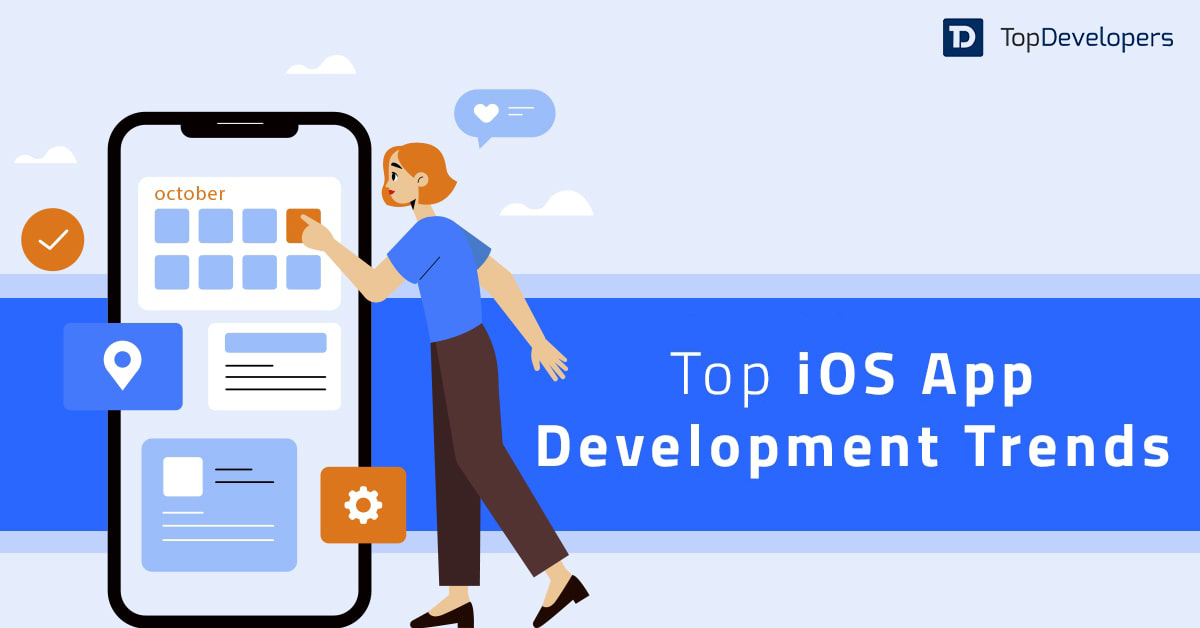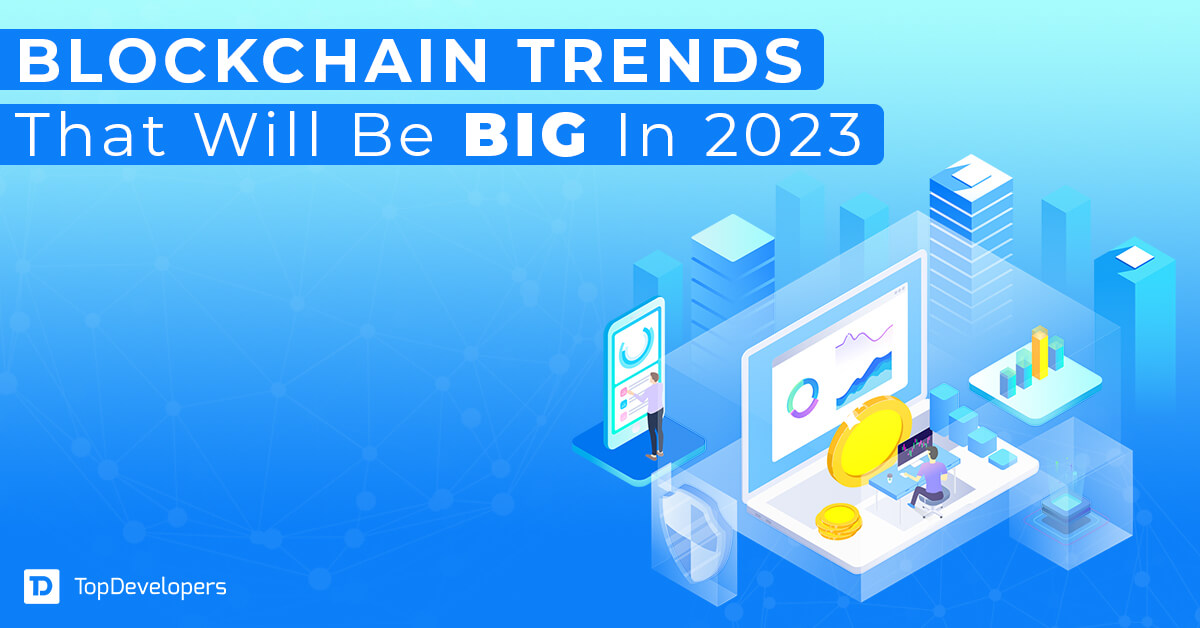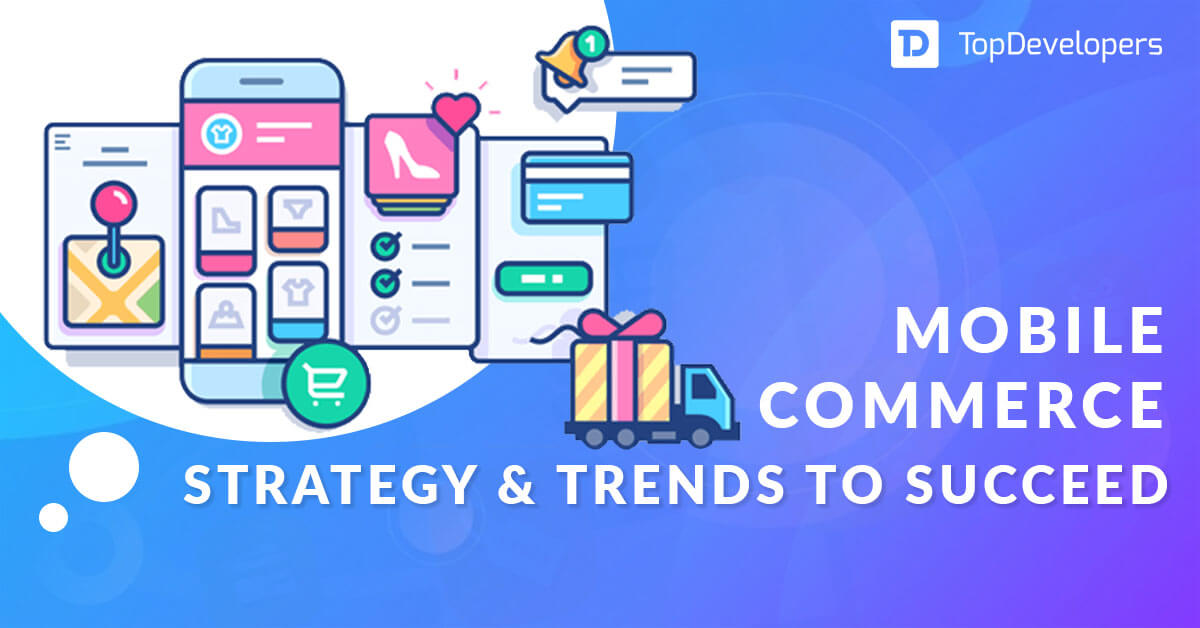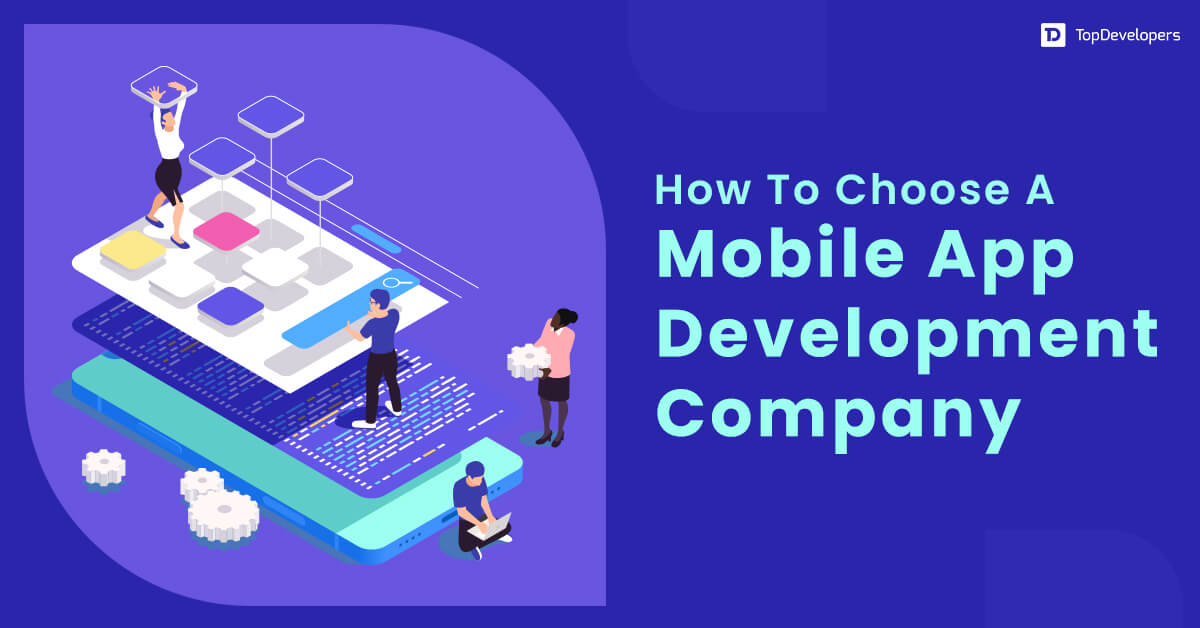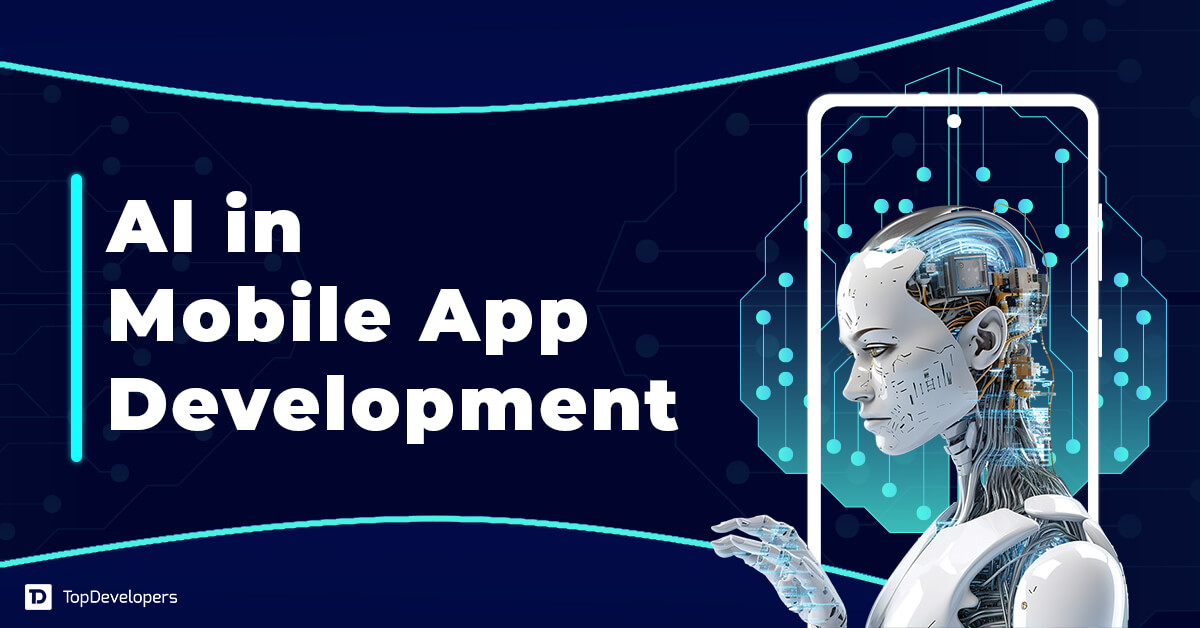
Mobile apps across various sectors are projected to generate a staggering $613 billion in revenue by 2025, with global user spending on Apple’s App Store and Google Play set to reach $186 billion by 2027.
This rapid growth in mobile app usage, coupled with a surge in app launches, has created a strong demand for continuous innovation. As the mobile app market becomes increasingly competitive, staying ahead of the curve with emerging trends has become crucial for businesses. In this blog, we will explore the most influential mobile app development trends set to dominate 2025, offering new opportunities for businesses to stay competitive and meet user demands in a constantly evolving digital landscape.
Table of Contents
- Top Mobile App Development Trends to follow in 2025
- Artificial Intelligence (AI) and Machine Learning (ML)
- Cloud-based Apps
- Progressive Web Apps (PWAs)
- GPS-based Features
- Immersive AR, VR, & XR
- Predictive Analytics
- Mobile Wallet and Mobile Payments
- Chatbot Mobile Apps
- Mobile Commerce (mCommerce)
- Dark Mode and Gradients
- Camera-Focused Mobile Apps
- Fully-Functional Smartwatch Apps
- P2P Mobile Apps
- 5G Technology Apps
- Super-Apps
- Instant Apps
- Neumorphism
- AR and VR
- Blockchain-Enabled Apps
- Internet of Things (IoT)
- Apps for Foldable Devices
- AI-Powered Personalization
- Voice Assistants and Voice Commerce
- Hyperlocalization
- Metaverse Integration
- Sustainability-Driven Apps
- Blockchain for Privacy and Security
- Hybrid and Cross-Platform Apps
- Mobile Payment Apps with Integrated Financial Tools
- Augmented Reality (AR) Navigation
- Superior App Security
- Low-Code/No-Code Development
- Sustainability-Focused Apps
- Voice User Interfaces (VUIs)
- Multi-modal Social Platforms
Top Mobile App Development Trends to follow in 2025
Wearable Tech Integration in Apps
Wearable apps continue to dominate the mobile app development landscape, and they’re expected to rise even further in 2025. According to GlobeNewswire, the wearable technology market is projected to reach close to USD 380.5 billion by 2028, with a large part of the growth fueled by advancements in health and fitness monitoring, productivity tools, and entertainment through Augmented Reality (AR) and Virtual Reality (VR). Wearables are also improving personalization, offering users a range of features, styles, colors, and custom settings for an enhanced user experience.
The latest wearable apps are increasingly sophisticated, and some anticipated trends for 2025 include:
- Next-gen interfaces using voices, gestures, eye-tracking, and human-computer interaction to command wearable devices.
- Innovations in biometric wearables to measure body vitals like blood pressure, glucose levels, stress, and emotional stress.
- Advancements in health and fitness wearables to offer customized feedback, training, and wellness recommendations.
- Expansion of wearable applications into social networks, education, travel, and fashion, creating a seamless integration across various user needs.
Artificial Intelligence (AI) and Machine Learning (ML)
AI and MLcontinue to reshape the mobile app development industry, and this influence will only grow in 2025. These technologies are transforming how apps are designed, developed, and delivered, making apps smarter and more intuitive for users.
Some of the key benefits and trends for AI and ML in mobile app development include:
- Personalized UX: AI and ML will continue to analyze user behavior, preferences, and interactions to provide a more customized experience. Apps will recommend content and features tailored to individual users, boosting engagement and retention.
- Voice and chat interfaces: Mobile apps will increasingly incorporate AI-powered voice assistants and chatbots, leveraging Natural Language Processing (NLP) and speech recognition for more accessible, conversational interactions with users.
- Augmented Reality (AR): AI and ML will further enhance the immersive properties of AR apps, offering users more realistic experiences. AI-powered image processing will allow for more accurate real-time superimpositions, improving map navigation, gaming, and educational tools.
Cloud-based Apps
Cloud-based apps have become a staple in mobile app development, and they are expected to continue evolving in 2025. These apps run on remote servers, making them accessible from virtually any internet-enabled device, which boosts their flexibility and scalability.
In 2025, cloud-based apps will increasingly integrate AI and the Internet of Things (IoT), enabling smarter, more customized experiences for users. Some key trends for cloud-based apps include:
- IoT-powered apps: Cloud-based IoT apps will seamlessly connect with devices, sensors, and machinery to collect and process real-time data. This will enhance performance and enable remote monitoring and control of connected devices.
- Cloud-native development: Apps will be built with a cloud-first approach using technologies like microservices, serverless computing, and containers. This approach will create more scalable, portable, and resilient apps capable of running on any cloud platform.
Progressive Web Apps (PWAs)
PWAs are expected to rise in adoption in 2025 due to their low development and maintenance costs, fast load times, and cross-platform compatibility. These apps operate across multiple devices without requiring installation, making them a more cost-effective alternative to native apps.
Key trends to look out for in PWAs include:
- The integration of advanced web technologies like service workers and web app manifests, which improve performance, reliability, and offline functionality.
- Innovations in push notifications that enhance user engagement, even when the user is offline, as well as the ability to add home screen icons for a more app-like experience.
- Continued focus on security and performance optimization to ensure PWAs are as reliable as their native counterparts, while also being easier and cheaper to maintain.
GPS-based Features
GPS-based features have already transformed the mobile app landscape, and with the advent of 5G technology, their impact is set to grow exponentially in 2025. With ultra-fast internet speeds and improved network infrastructure, GPS-enabled mobile apps will enable real-time location-based services to enhance user experience across various industries.
The following areas will see major advancements:
- Automobile and logistics: Enhanced GPS-based navigation for real-time traffic management, predictive route planning, and improved on-demand delivery systems.
- Tourism and travel: GPS-enabled mobile apps will offer personalized travel recommendations based on real-time user preferences and location data, offering seamless travel experiences.
- Delivery services: Integration with advanced cloud-based systems and augmented reality will further enhance location tracking and management in food, medicine, and goods delivery apps.
Immersive AR, VR, & XR
Immersive Augmented Reality (AR) and Virtual Reality (VR) are predicted to continue growing as mobile app trends in 2025. These technologies blend the physical world with digital elements to offer engaging, interactive experiences. While AR has already become a mainstream tool in gaming and education, Extended Reality (XR), which includes both AR and VR, is pushing the boundaries of immersive experiences.
Some of the expected advancements in AR and XR apps include:
- The use of computer vision, deep learning, and 3D modeling to improve the accuracy and realism of AR and VR experiences.
- Spatial audio and haptic feedback technologies will be used to create more immersive and realistic environments in apps, especially in gaming and training applications.
- Enhanced cloud computing integration will enable real-time data synchronization across AR/VR apps, allowing for collaborative and interactive experiences.
Predictive Analytics
Predictive analytics will continue to play a crucial role in mobile app development in 2025. Using AI and machine learning algorithms, predictive analytics helps apps analyze data, forecast outcomes, and optimize performance, providing businesses with valuable insights for decision-making.
Key trends in predictive analysis for mobile apps include:
- Behavior analysis: Apps will use predictive analytics to analyze user behavior and preferences, delivering personalized content and suggestions based on predictive models.
- Performance optimization: Predictive analytics will help app developers and businesses understand user patterns, allowing them to optimize app performance and improve user engagement.
- Integration with tools like Google Analytics, TensorFlow, and Firebase Predictions will make it easier for businesses to implement predictive features in their apps.
Mobile Wallet and Mobile Payments
The rise of mobile wallets and mobile payments is expected to continue into 2025. With increasing demand for secure, easy, and fast payment solutions, mobile wallets are becoming a crucial tool for both consumers and merchants.
Trends to watch in mobile payments include:
- The growing use of contactless payments, with NFC-enabled devices making transactions faster and more secure.
- The introduction of biometric payments, where users authenticate payments using fingerprint recognition, face recognition, or voice commands.
- The rise of cryptocurrency payments and open banking solutions, enabling users to make payments directly through decentralized systems.
Relevant Read: Top Features to add in your eWallet App
Chatbot Mobile Apps
Chatbots have become an integral part of customer service, and their role is expected to expand even further by 2025. With the growth of AI and Deep Learning technologies, chatbots will evolve into more sophisticated AI tools capable of handling a wider range of tasks.
Trends in chatbot mobile apps include:
- AI-driven virtual assistants that can interact with users more naturally, providing personalized responses and handling complex queries.
- Integration with messaging apps, allowing businesses to interact with customers through platforms like WhatsApp, Facebook Messenger, and more.
- The use of sentiment analysis to gauge user emotions and provide more empathetic and contextually relevant responses.
Mobile Commerce (mCommerce)
Mobile commerce, or mCommerce, is a rapidly growing trend that’s expected to continue into 2025. With the rise of smartphones, wearables, and tablets, consumers are increasingly shopping online through mobile apps.
Key trends in mCommerce include:
- AI and ML integration to learn user behavior and shopping patterns, offering personalized product recommendations.
- The use of AR and VR in apps to enable virtual try-ons and create more engaging, interactive shopping experiences. For example, IKEA’s AR app allows customers to place virtual furniture in their homes before purchasing.
Dark Mode and Gradients
Offering unique and customized experiences has always been the driving force behind successful digital products. In 2025, mobile app design trends will heavily incorporate dark mode and gradients. These features are being adopted by most major applications such as Facebook, LinkedIn, and Twitter, allowing users to toggle between light and dark backgrounds.
Dark mode reduces eye strain in low-light environments and can extend battery life on OLED screens by using darker pixels. It’s a trend that’s set to stay, with UI/UX design evolving to offer users more personalized modes based on their preferences. For businesses, implementing dark mode can lead to a more engaged user base, as users appreciate having a choice in how they interact with an app.
Alongside dark mode, gradients will continue to be a key feature in mobile app development. By blending two or more colors smoothly, gradients can add depth and dynamism to a user interface. They are often used to highlight important elements such as buttons, icons, and call-to-action areas. As mobile apps continue to lean into minimalist designs, gradients will help retain visual interest and improve the user experience. When combined with dark mode, gradients will help ensure that key interface elements stand out clearly, even against darker backgrounds.
Camera-Focused Mobile Apps
Camera-focused apps are no longer just the domain of social media; they are becoming increasingly sophisticated and relevant across various industries. The camera’s ability to capture high-quality images, scan documents, translate text, or even assist in medical diagnostics is opening up exciting possibilities. While apps like Instagram and TikTok have popularized camera features for social sharing, new camera-based applications are set to expand into areas like healthcare, education, and enterprise solutions.
For example, in healthcare, camera apps can help users scan medical documents, identify skin conditions through image recognition, or even provide virtual health consultations. In education, AR (augmented reality)-enabled camera apps can help students interact with 3D models of anatomical structures or historical landmarks. This trend is likely to see rapid growth as more businesses and developers focus on creating specialized camera tools for industries that benefit from real-time image processing and analysis.
Fully-Functional Smartwatch Apps
With the growing popularity of wearables, particularly smartwatches, the demand for fully-functional smartwatch apps is expected to skyrocket in 2025. These apps will not only sync with smartphones to offer notifications and alerts but will become fully capable of managing health data, fitness routines, and even providing entertainment and communication directly from the wrist.
Smartwatch apps will become indispensable tools for monitoring health metrics, such as heart rate, step count, calories burned, and sleep quality. These apps will evolve to offer more personalized health recommendations, integrating with AI-driven health platforms to give users tailored fitness and wellness plans. Smartwatch apps will also integrate seamlessly with other IoT devices, creating an interconnected ecosystem of devices that users can control directly from their wrist.
The adoption of fully functional smartwatch apps will empower users to monitor and manage their well-being in real-time, making it one of the most anticipated trends in the coming year.
P2P Mobile Apps
The rise of peer-to-peer (P2P) payment systems is another major trend in mobile app development. P2P apps like Venmo, PayPal, and Zelle are making financial transactions faster, more convenient, and secure for users. In 2025, the P2P mobile app market is projected to see tremendous growth, with an estimated market size of $8.07 trillion by 2030.
These apps allow users to transfer funds directly between bank accounts without the need for intermediaries. The convenience of P2P apps is contributing to their rapid adoption, particularly among younger generations and those who prefer digital wallets. As more businesses adopt P2P payment solutions, it is expected that these apps will also integrate cryptocurrency wallets, further expanding their appeal. In the future, integrating AI for fraud detection and streamlining user experiences will continue to shape the future of P2P mobile apps
5G Technology Apps
The advent of 5G technology is set to transform mobile app development. Offering internet speeds up to 100 times faster than 4G, 5G will open the doors for new and more advanced mobile applications. With significantly faster data speeds, low latency, and high bandwidth, 5G will be integral in supporting next-gen technologies like AR, VR, and IoT.
5G will revolutionize video streaming, making it possible to stream high-resolution content in real time, without buffering. This technology will also allow for enhanced remote work, telemedicine, and IoT applications, where real-time data processing is crucial. In the world of gaming, 5G will support cloud-based games that require high-speed data transmission, enabling a seamless gaming experience.
Businesses will need to optimize their mobile apps for 5G networks to ensure that they take full advantage of these technological advancements. The impact of 5G will also be felt in AR/VR apps that require high-speed data transfer for real-time, immersive experiences.
Super-Apps
The era of super-apps is rapidly approaching. As mobile users become overwhelmed by the number of apps they need to download for different services, super-apps consolidate these functionalities into one app. Super-apps integrate multiple services such as messaging, payments, social media, shopping, and ride-hailing, offering a seamless experience to users.
WeChat, Paytm, Careem, and Gojek are some of the most successful examples of super-apps. These platforms allow users to access a variety of services within a single application, improving convenience and enhancing user experience. For app developers, the shift toward super-apps presents a significant opportunity to build multi-functional platforms that can cater to a wide array of user needs.
In 2025, as the demand for super-apps increases, businesses will look to incorporate more services into their apps, making them hubs for productivity, entertainment, communication, and financial services. This trend presents a lucrative opportunity for businesses looking to increase user engagement by providing a one-stop-shop for everything their users might need.
Instant Apps
Instant apps are another major trend in mobile app development, especially as users become more selective about the apps they download. Instant apps allow users to access a portion of an app’s functionality without the need for full installation. Users can simply click on a link, and the app will launch directly in the browser or mobile interface.
Instant apps save valuable storage space on users’ devices and reduce the barrier to entry for app usage. For businesses, these apps present an opportunity to provide users with a seamless experience without requiring them to download and install the full version of the app. This trend is gaining traction, especially with the growing number of mobile apps available on the Google Play Store.
By 2025, more businesses will take advantage of Android Instant Apps to enhance the user experience and ensure they meet the needs of their customers, offering a streamlined, efficient, and engaging platform.
Neumorphism
Neumorphism is a design trend that combines elements of skeuomorphism and flat design to create interfaces that feel tactile and three-dimensional. Unlike traditional flat designs that use bold, sharp lines, neumorphism uses soft shadows, gradients, and subtle highlights to create the illusion of physical buttons and objects within a digital interface. This makes interactions feel more intuitive and natural.
One of the biggest advantages of a neumorphic design is that the design is highly suitable for interfaces with small buttons. The exciting potential of neumorphism as a design concept tempts us to think that neumorphism will be one of the most trending technologies to build a successful mobile app in 2025.
AR and VR
The world of augmented reality (AR) and virtual reality (VR) is expanding beyond gaming and entertainment. In 2025, AR and VR will become integral to a variety of industries, including education, healthcare, automotive, and real estate. With the help of AR and VR, mobile apps will allow users to interact with the digital world in new ways.
For example, in the education sector, AR will enable students to interact with 3D models of organs or historical artifacts. In real estate, AR and VR will allow potential buyers to take virtual tours of homes, helping them visualize spaces before committing to a visit. As AR/VR technology becomes more accessible and affordable, its application across various fields will grow significantly, making it one of the most exciting trends in mobile app development in 2025.
Blockchain-Enabled Apps
Blockchain technology is not just about cryptocurrency; it’s also revolutionizing mobile app development by offering a secure, decentralized method for handling data. With blockchain, apps can securely store transactions, verify identities, and provide tamper-proof data storage. This makes blockchain-enabled apps ideal for industries like finance, healthcare, and logistics, where data security and transparency are paramount.
In 2025, blockchain-enabled apps are set to become more common, as businesses look for ways to improve transparency, reduce fraud, and ensure secure transactions.
Internet of Things (IoT)
The Internet of Things (IoT) has already begun to reshape industries by connecting devices and allowing them to communicate over the internet. In 2025, IoT apps will become increasingly important, particularly in smart homes, healthcare, and industrial automation. By connecting everything from lightbulbs to medical devices, IoT will provide more personalized and data-driven experiences.
For businesses, developing IoT-enabled apps means integrating sensors, analytics, and AI to provide real-time feedback and control. This will give consumers more power to interact with their environments, making IoT one of the top trends in mobile app development.
Apps for Foldable Devices
With the rise of foldable devices, there’s an emerging demand for foldable app development. Apps for foldable smartphones need to support multi-screen and multi-window capabilities, as these devices offer users a unique form factor. Mobile app developers will need to consider the following:
- Resizability: Ensuring that apps work seamlessly across different screen sizes and orientations.
- Multi-window support: Enabling users to multitask effectively across multiple screens.
- Aspect ratio and continuity: Ensuring that the app maintains consistency and usability across foldable screens.
As foldable devices gain traction in 2025, businesses will need to adapt their apps to this new form factor to ensure a seamless user experience.
AI-Powered Personalization
One of the most transformative trends in mobile app development for 2025 is AI-powered personalization. Apps are evolving to leverage artificial intelligence to tailor experiences for each individual user. From adaptive interfaces to predictive content delivery, personalization is enhancing user engagement by anticipating needs and providing a more customized experience.
In 2025, AI-driven apps will not just respond to user inputs but will learn from them, predicting preferences and behaviors. For example, fitness apps might adapt their workout plans based on past activities and goals, while news apps will curate articles based on user interests and reading patterns. Machine learning algorithms are becoming more adept at understanding user data in real time, allowing apps to make smarter decisions, whether it’s suggesting products, optimizing notifications, or adjusting app design based on user preferences.
For businesses, the ability to use AI for personalized experiences means deeper customer connections and a higher likelihood of retaining users over time. This trend is anticipated to become a core part of mobile app development, not just for customer-facing apps but also in enterprise and service-oriented applications.
Voice Assistants and Voice Commerce
Voice assistants, powered by AI, are rapidly becoming a major feature in mobile app development. In 2025, voice-enabled apps are going to be even more commonplace. The integration of voice recognition and natural language processing (NLP) is advancing, allowing users to control apps, search content, and make purchases via voice commands.
Apps that use voice technology—such as smart home apps, shopping apps, and even customer service applications—are growing in popularity as voice becomes a primary interface for interaction. For instance, e-commerce platforms are introducing voice search and voice commerce capabilities, allowing users to shop hands-free and make purchases using just their voice. This offers convenience and accessibility for users, particularly those with disabilities or those who prefer voice interactions.
For businesses, adopting voice tech in mobile apps can improve accessibility and streamline customer experiences. Brands like Amazon and Google have set the standard, and in 2025, even small businesses are expected to integrate voice-powered interactions, improving the usability of apps across devices.
Hyperlocalization
In 2025, hyperlocalization is set to be a key trend for mobile apps looking to reach and engage specific geographic markets. This goes beyond language translation and aims to provide highly targeted experiences based on local culture, regional preferences, and location-based services.
For example, food delivery apps may recommend local eateries based on neighborhood preferences, or weather apps might offer hyper-local forecasts based on a user’s exact location. Retail apps could offer promotions tailored to specific cities or regions, and even ride-sharing apps may adjust pricing and availability based on the specific neighborhoods users are in.
The use of geo-targeting and location intelligence will allow businesses to create more personalized, relevant, and localized experiences for users. By leveraging location-based data, businesses can engage users in a way that feels local, relevant, and timely, which could significantly boost app retention and customer satisfaction.
Metaverse Integration
While the Metaverse has been widely discussed in virtual reality and gaming communities, in 2025, mobile apps are beginning to tap into the concept of immersive virtual worlds. Although the Metaverse is still in its early stages, the integration of AR (Augmented Reality) and VR (Virtual Reality) into mobile apps will help bring this next generation of digital interaction into users’ everyday lives.
Apps will start to offer features like virtual showrooms, immersive brand experiences, and augmented spaces that blend the physical and digital realms. For instance, shopping apps will offer virtual fitting rooms that allow users to try on clothes via AR, or real estate apps might offer virtual tours of properties using VR. By 2025, these experiences will become even more sophisticated and more widely available, especially as smartphones and mobile devices become more capable of handling high-fidelity AR/VR experiences.
For businesses, Metaverse integration could open up new avenues for engagement, customer interaction, and product exploration. Virtual experiences could replace traditional physical spaces and events, creating novel ways for customers to interact with products, brands, and services.
Sustainability-Driven Apps
As sustainability becomes an even more pressing concern in 2025, eco-friendly mobile apps are expected to rise in popularity. From apps that help users track their carbon footprint to platforms that offer sustainable shopping options, the demand for apps that promote green practices is growing.
Examples include eco-conscious food delivery apps, sustainable shopping platforms, and green energy apps that help consumers monitor and reduce their environmental impact. These apps might suggest energy-efficient alternatives, calculate carbon savings, or even partner with companies that offset carbon emissions.
For businesses, focusing on sustainability in mobile apps offers an opportunity to tap into a rapidly growing market of environmentally aware consumers. In 2025, brands that prioritize sustainability in their digital services will likely see a boost in user loyalty, especially as younger generations, in particular, place more emphasis on environmental responsibility.
Blockchain for Privacy and Security
In 2025, privacy and security are continuing to be top concerns for mobile app users. To address these concerns, many app developers are turning to blockchain technology. Blockchain provides a decentralized and tamper-proof system that ensures data cannot be easily hacked or manipulated.
Blockchain-powered apps will allow users to have more control over their personal information and make transactions more secure. Cryptocurrency wallets, decentralized finance (DeFi) apps, and secure messaging platforms are already tapping into blockchain’s security benefits. However, in 2025, blockchain is expected to expand beyond the crypto world, influencing a wider array of applications.
For example, supply chain tracking apps will use blockchain to ensure the authenticity and safety of goods as they move through the supply chain, while health apps will use blockchain to securely store sensitive health data.
For businesses, using blockchain for security and privacy will not only improve the trustworthiness of their apps but also attract customers who are increasingly concerned about how their data is handled. Blockchain’s role in providing enhanced privacy will be a major differentiator in the app market.
Hybrid and Cross-Platform Apps
With the rise of diverse mobile devices and operating systems, cross-platform and hybrid apps are gaining popularity in 2025. Rather than building separate apps for iOS, Android, and other platforms, developers are opting for cross-platform frameworks like Flutter, React Native, and Xamarin to build apps that can run across multiple platforms with minimal code duplication.
These frameworks allow developers to build apps that function seamlessly across both Android and iOS, reducing development time and costs. This trend is particularly advantageous for startups and businesses with limited budgets, as it enables them to launch their app on multiple platforms without the need for extensive platform-specific coding.
For businesses, using cross-platform technologies can lead to a faster time to market, lower development costs, and a broader user reach. As these tools evolve in 2025, the gap between native and cross-platform apps will continue to close, making cross-platform development a more attractive option.
Mobile Payment Apps with Integrated Financial Tools
Mobile payment apps, such as PayPal, Venmo, and Cash App, will continue to evolve in 2025, incorporating more comprehensive financial tools. Instead of simply serving as digital wallets for sending and receiving money, these apps will offer features like investment tracking, personal finance management, and cryptocurrency transactions.
For example, payment apps might introduce AI-based financial advisors, allowing users to track spending habits, set budgets, and get recommendations on saving money or investing. Many apps will also integrate cryptocurrency wallets for users to trade and invest in digital currencies seamlessly within the same app interface.
For businesses, offering integrated financial tools within payment apps can create a more engaging user experience and help drive long-term customer loyalty by providing added value. Apps that combine convenience with financial management are likely to see growing popularity, particularly as users look for ways to manage their finances in one place.
Augmented Reality (AR) Navigation
In 2025, augmented reality (AR) is revolutionizing navigation systems in mobile apps. Traditional GPS navigation apps are adding AR capabilities to help users find their way around in the real world using real-time visual guidance.
For example, AR navigation apps might show virtual arrows or directions overlaid on real-world environments, guiding users to their destination in a way that’s more intuitive than traditional map-based navigation. This technology is particularly useful for indoor navigation in complex environments like malls, airports, and large office buildings.
Businesses in sectors like retail, tourism, and real estate will increasingly incorporate AR navigation in their apps to enhance user experience, drive foot traffic, and provide more personalized and engaging ways to interact with their physical environments.
Superior App Security
In 2025, app security will be a top priority for both developers and users. As cyber threats become more sophisticated, developers will increasingly focus on building apps that are secure, protecting users’ data and privacy. According to recent reports, over 70% of mobile apps contain security vulnerabilities. To counter this, mobile apps in 2025 will integrate advanced security features such as biometric authentication, end-to-end encryption, zero-trust architecture, and multi-factor authentication.
Expect to see blockchain technology playing a crucial role in securing app transactions and data storage. With regulations like GDPR and CCPA putting more pressure on app developers to comply with privacy laws, superior app security will no longer be optional but a key selling point for mobile apps.
Low-Code/No-Code Development
The rise of low-code and no-code platforms is revolutionizing the way apps are developed. In 2025, the focus will be on democratizing app development by enabling business users with minimal technical knowledge to build functional apps. These platforms use visual interfaces and drag-and-drop components to create applications without writing complex code.
Low-code/no-code tools are expected to streamline the development process, reduce development costs, and accelerate time-to-market for businesses looking to create apps quickly. This trend is particularly attractive to small and medium-sized businesses that might not have the resources to hire large development teams but still want to create powerful, scalable apps. The growth of these platforms will allow more people to experiment with and build apps tailored to their specific business needs.
Sustainability-Focused Apps
As environmental concerns continue to rise, the trend of sustainability-focused apps will gain significant traction in 2025. These apps will aim to help users reduce their carbon footprint, make sustainable purchasing decisions, or track and minimize waste.
From eco-friendly transportation apps that promote electric vehicles (EVs) and shared rides to apps focused on sustainable shopping, expect more solutions dedicated to a greener planet. These apps will leverage data analytics and AI to give real-time insights into sustainable practices and recommend eco-friendly alternatives.
Sustainability in app development will also focus on energy-efficient coding, reducing server energy consumption, and creating apps that help users embrace a more eco-conscious lifestyle. As more consumers and businesses prioritize sustainability, this trend will push the development of apps that promote green living while contributing to a greener tech ecosystem.
Voice User Interfaces (VUIs)
With the continued growth of voice assistants like Siri, Alexa, and Google Assistant, Voice User Interfaces (VUIs) are expected to take center stage in mobile app development in 2025. As consumers become more accustomed to voice-activated interactions, mobile apps will increasingly integrate voice commands for a hands-free experience.
VUIs will make it easier for users to interact with apps while driving, exercising, or multitasking. From controlling smart home devices to getting updates on schedules or ordering food, voice interaction will become a key feature in mobile apps. Developers will focus on natural language processing (NLP) and AI-driven voice recognition to enhance user experience and provide more conversational, intuitive app interfaces.
This trend is not just limited to virtual assistants but will extend across various industries, including e-commerce, fitness, healthcare, and customer service. VUIs will improve accessibility and convenience, making apps more user-friendly and enhancing engagement.
Multi-modal Social Platforms
The way we communicate and interact on social media is evolving rapidly, and in 2025, multi-modal social platforms will redefine digital communication. These platforms allow users to engage in a variety of ways—text, audio, video, and even virtual reality (VR) or augmented reality (AR)—all within the same ecosystem.
Expect social media apps to incorporate immersive experiences, such as live streaming, voice conversations, and interactive AR features. By blending audio, video, and text formats, these platforms will enable users to engage more deeply and express themselves in diverse ways. Users will be able to switch between different forms of communication based on their preferences, providing a more personalized, immersive experience.
With the rise of apps like Clubhouse and TikTok, and new collaborative features being integrated into traditional social media platforms, multi-modal social experiences will engage users in new, exciting ways. This trend will lead to more dynamic forms of digital interaction, where people can have richer conversations and create more engaging content.
Conclusion
The mobile app development trends of 2025 and beyond are shaped by a growing focus on personalization, security, and innovation. Technologies such as AI, voice recognition, blockchain, and 5G are transforming how businesses approach app development, offering new ways to enhance usability, functionality, and trustworthiness. As mobile devices evolve and new possibilities emerge, businesses that stay on top of these trends will be able to lead the way in delivering innovative, user-friendly, and secure mobile experiences.
By adopting next-gen technologies like dark modes, camera-focused apps, AR/VR, low-code/no-code development, and sustainability-focused solutions, businesses can create apps that not only meet user needs but anticipate them, resulting in greater user satisfaction, engagement, and loyalty. Whether you’re building a super app, leveraging the latest in mobile security, or optimizing for voice user interfaces, staying ahead of these trends is essential for success in the competitive app market.
For businesses looking to integrate these advanced features, working with experienced mobile app development companies is key. These app developers possess the skills, expertise, and insight necessary to build apps that align with current trends and meet evolving user expectations. Partnering with a leading mobile app development firm can help ensure your app stands out in the crowded marketplace, providing the cutting-edge experience that users demand while delivering on your business goals.
Staying ahead of the curve in mobile app development not only boosts user experience but also opens up new revenue streams and opportunities for growth. Embrace the future of mobile apps today to position your business for success in 2025 and beyond.
 Avantika Shergil
| Nov 27, 2024
Avantika Shergil
| Nov 27, 2024
Avantika Shergil is a technology enthusiast and thought leader with deep expertise in software development and web technologies. With over 8 years of experience analyzing and evaluating cutting-edge digital solutions, Avantika has a knack for demystifying complex tech trends. Her insights into modern programming frameworks, system architecture, and web innovation have empowered businesses to make informed decisions in the ever-evolving tech landscape. Avantika is passionate about bridging the gap between technology and business strategy, helping businesses build customized software and website, and understand about different tools to leverage effectively for their ventures. Explore her work for a unique perspective on the future of digital innovation.



